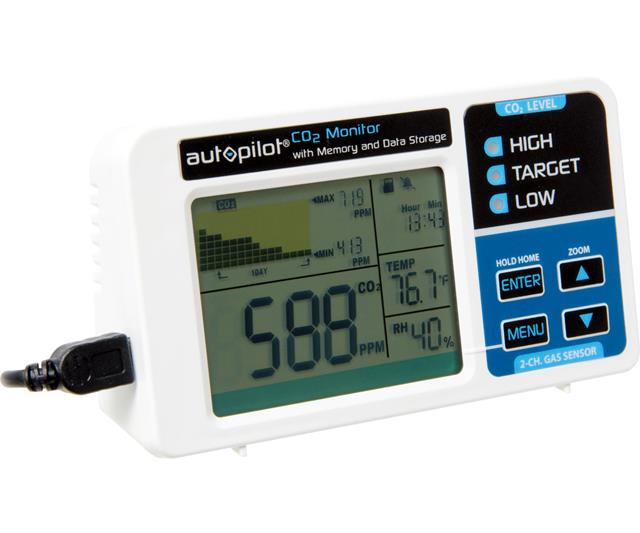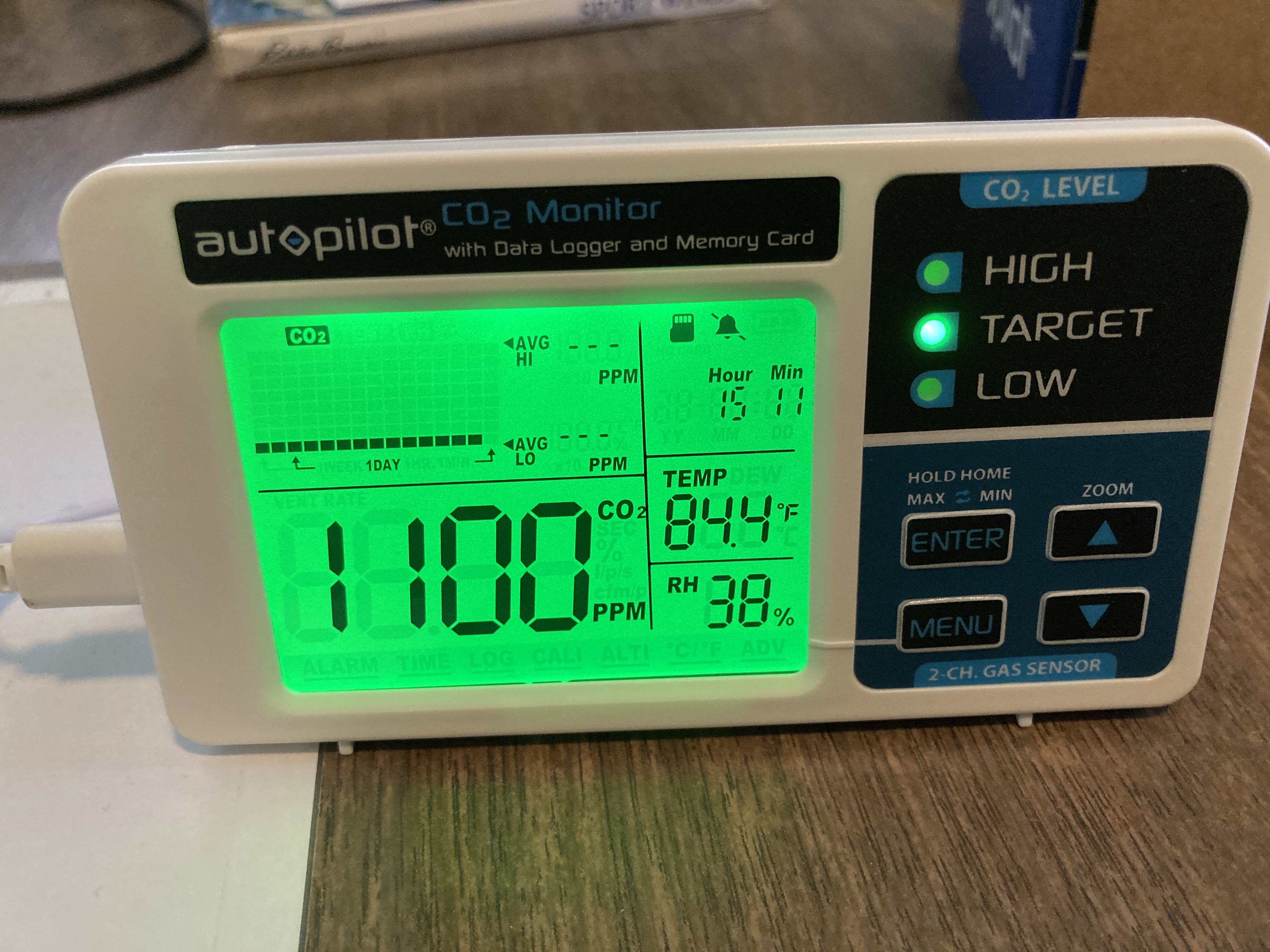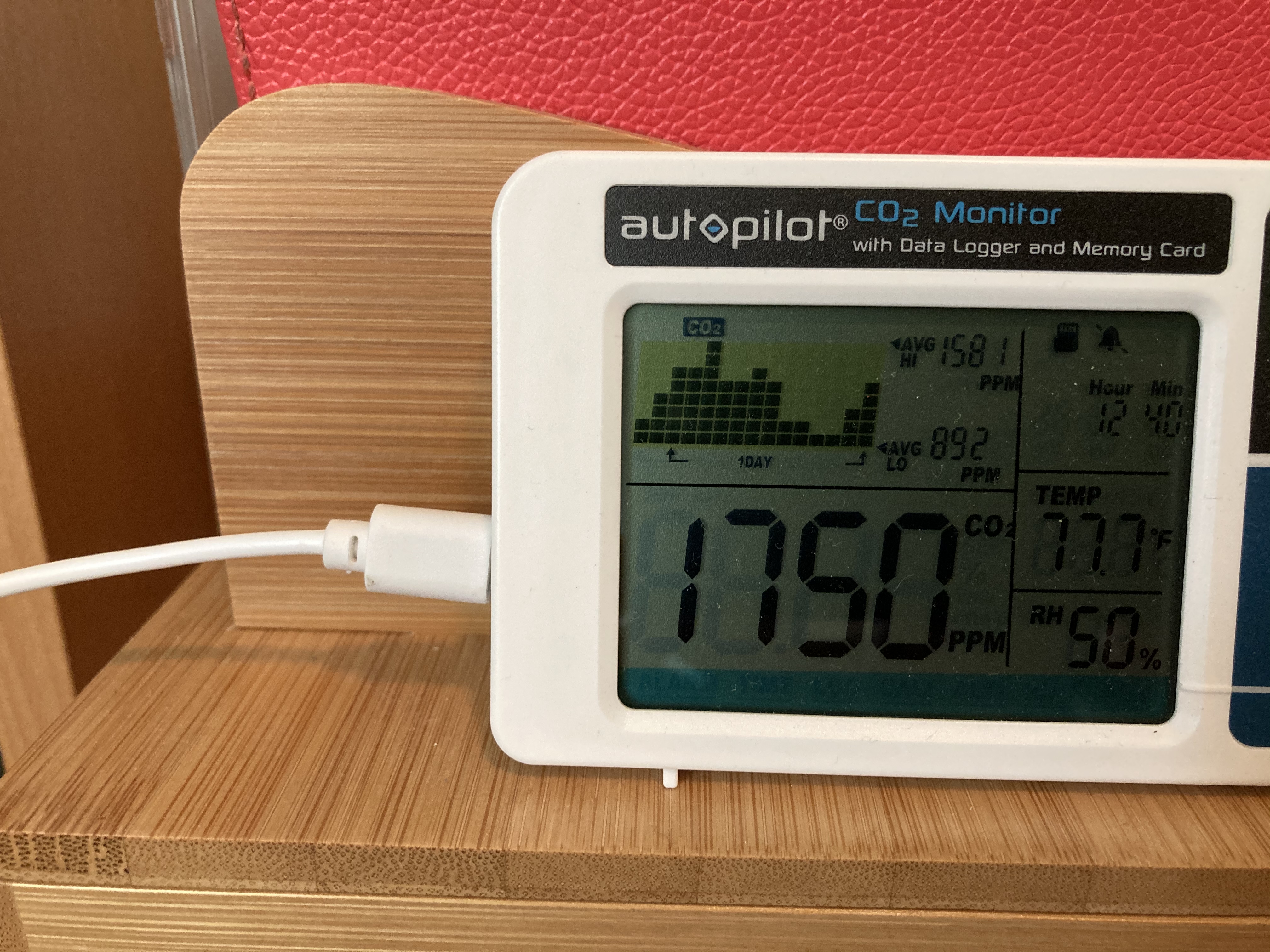Measuring and Coping with Indoor CO2
I have two home offices. The one in the garage has lots of natural light, is separate from the family, but is only usable when the weather is sufficiently cool. The one in the house is in a tiny 100 sq. ft. bedroom. During this particularly hot summer, I mostly stayed indoors, and I noticed I’d get dizzy and sometimes nauseous in the afternoons.
It’s even worse on days that my daughter has to use the office for school in the morning. So I bought a CO2 monitor.

I bought that model because it writes values to a CSV file on a microSD card, so I could graph them if I wanted.
Typical outdoor CO2 levels are around 415 ppm. The science is fuzzy, but it seems like CO2 levels above 1000 ppm start to negatively impact thinking, concentration, and comfort. I know that, on days where I can’t open the window because it’s too hot or smoky outside, my thinking gets super fuzzy to the point that I’m unable to work.
Now that I can quantify the CO2 level in the room, with a single person and maybe the door cracked, the CO2 level will climb to about 1200 ppm.

If I’m giving a presentation or conducting an interview, it might even reach north of 2000.

If it got too high, no matter the conditions outside, I’d crack a window in the room I was in. Even a small crack was enough to help some. Does gas diffuse that quickly?
I did make a trip to a nursery to purchase some indoor goldon pothos plants, but it’s not clear if they help in a material way. I don’t think I have controlled enough conditions to measure the effect of two small plants. (I will say that the goal is not for the plant to produce oxygen, as humans consume far more oxygen than a small plant can produce, but instead to absorb CO2.)
Even the entire house might have elevated CO2 levels. With the doors and windows shut most of the day (wildfire season), and everyone home (pandemic), the CO2 level in the house stayed around 1500 for weeks at a time. And my children were randomly vomiting in the mornings, with no other symptoms. Related? Caused by smoke seeping in? Something else? Not sure.
It climbs high in a bedroom during the night, too.
But here’s a surprising case: every time we’d use our gas stove, oven, or dryer, the CO2 level in the house would spike above 2000 ppm. This makes sense, since the outputs of burning methane are water vapor and CO2. During bad air quality days, when we had to keep the windows shut, we tried to only use electric cooking appliances: the rice cooker, bread maker, toaster oven, and crock pot.
When we bought the house, natural gas was the cheap, clean source of fuel. Now, I’m wishing we’d gone electric for at least the dryer and water heater, especially when we install solar panels.
Someone recently asked me “Hey, how is your CO2 problem?” I laughed a bit, because it’s not my CO2 problem – it’s all of ours. Especially in modern, insulated and well-sealed homes. I’m just measuring it. And it’s only going to get worse with climate change. In the past 60 years, humans have increased atmospheric CO2 levels from 315 ppm to 415 ppm, and it’s expected to reach 700-900 ppm in my childrens’ lifetimes. That means indoor CO2 levels will stay above levels that affect human cognition. (Climate change depresses the shit out of me, and this is yet another reason why.)
There are cities that are banning new construction of residental natural gas lines. When I first heard of that, it seemed crazy, but it doesn’t anymore. I will miss cooking eggs on a gas stove, but maybe that can be solved with a single burner fed from a tank of biogas, or something.